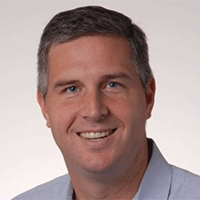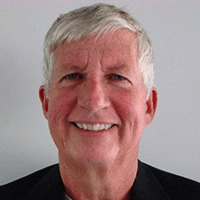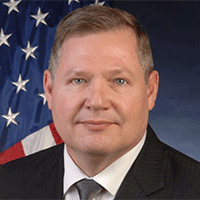
Tuesday August 27th: 11:00am - 12:20pm
Mr. Ken Leisenring
Chief Engineer, Powertrain Calibration
Ford Motor Company
Presentation Title: Democratizing Optimization and Anomaly Detection in Product Development
Abstract: This conversation addresses the challenge of creating robust optimization and anomaly detection systems for product development. We aim to achieve optimal solutions that are resistant to noise and variability, while ensuring these solutions can be demonstrably proven as correct. The ultimate goal is to create a system capable of replicating the decision-making process of expert engineers, eliminating human error, and enabling continuous operation. To address these needs, the tactical objectives include advanced optimization algorithms, anomaly detection, and the development of synthetic sensors and models. Strategically, there is a recognition that many advanced capabilities have not yet been democratized for use directly by product development engineers. This focus on leveraging readily available solutions would allow us to address a wider range of problems and support a larger user base, rather than solely focusing on solving the most complex challenges. This involves creating tools that can be widely used by engineers to achieve repeatable and predictable results, without relying solely on AI experts for large-scale implementation.
Biography: Ken Leisenring is Chief Engineer, Vehicle Propulsion Systems Engineering at Ford Motor Company. He is an accomplished engineering professional with a strong foundation in mechatronics, holding degrees in Electrical Engineering from Michigan Technological University and Mechanical Engineering from Ohio State University. Ken has extensive experience in powertrain calibration, controls, emissions, on-board diagnostics, fuel economy, and new technology development. His leadership has driven successful projects related to Ford launches of EcoBoost engines, gasoline particulate filters, tri-metal catalysts, and adaptive cruise control. Ken is known for developing strategic visions and innovative approaches, consistently pushing the boundaries of automotive technology and driving efficiency.

Monday, August 26th, 10:50am - 12:10pm
Dr. Michael Grieves
Executive Director and Chief Scientist
Digital Twin Institute
Title: Digital Twins - The Underlying Premise of Product Lifecycle Management
Abstract: From its introduction in 2002, Digital Twins have been the underlying premise for Product Lifecycle Management (PLM). This year's conference is highlighting "emerging technologies that impact critical engineering issues of product design and development, manufacturing, and the management and integration of information systems throughout the product life-cycle". Dr. Grieves, who originated the concept of Digital Twin and authored the seminal book on PLM, will present his perspectives of Digital Twins, their types, technologies, and use throughout the product lifecycle, and their evolution as intelligent and interoperable entities with AI into platforms and metaverses.
Biography: Dr. Michael Grieves is an internationally renowned expert on digital twins, a concept he originated, and Product lifecycle Management (PLM) a discipline he wrote the seminal book for. Dr. Grieves has over five decades of executive, board, and technical experience in both global and entrepreneurial technology and manufacturing companies. He has consulted and done research at some of the top global organizations (NASA, Boeing, GM, Unilever) and has served as a senior executive and board member at both Fortune 1000 companies and entrepreneurial organizations.
Academically, he has had appointments and has done research and/or taught at the University of Michigan, Purdue University, and University of Iowa. Dr. Grieves has a BS Computer Engineering from Michigan State, and MBA from Oakland University, and his doctorate from Case Western Reserve University.

Tuesday, August 27th, 9:20am - 10:40am
Mr. Mike Molnar
NIST / Manufacturing USA
The Office of Advanced Manufacturing (OAM) serves as the headquarters for the interagency Advanced Manufacturing National Program Office to coordinate Manufacturing USA, a network of manufacturing innovation institutes across the country that brings together industry, academia, and the public sector to advance American manufacturing.
Keynote Title: Convening Ecosystems for U.S. Global Leadership in Advanced Manufacturing
Abstract: Manufacturing USA exists to secure U.S. global leadership in advanced manufacturing through large-scale public-private collaboration on technology, supply chain, and workforce development. The institutes in the Manufacturing USA network convene business competitors, academic institutions, and other stakeholders to test applications of new technology, create new products, reduce cost, and risk, and enable the manufacturing workforce with the skills of the future. This keynote will highlight two new manufacturing institute opportunities that further help improving our way of life, strengthen our economy, ensure our national security, all while empowering the current and next generation.
The Manufacturing USA network is operated by the interagency Advanced Manufacturing National Program Office, which is headquartered in the National Institute of Standards and Technology (NIST), in the Department of Commerce. The office operates in partnership with the Department of Defense, the Department of Energy, NASA, the National Science Foundation, and the Departments of Education, Agriculture, Health and Human Services (HHS), and Labor.
Biography: Mike Molnar is the founding director of the Advanced Manufacturing National Program Office, the interagency team responsible for the Manufacturing USA program. Mike also leads the NIST Office of Advanced Manufacturing and serves as co-chair of the National Science and Technology Council, Subcommittee on Advanced Manufacturing – the team responsible for the National Strategic Plan for Advanced Manufacturing.
Prior to joining federal service in 2011 Mike had a successful industry career, including 25 years leading manufacturing and technology development at Cummins, a U.S. based global company that designs, manufactures, and distributes engines and power generation products. Midcareer he served as the first Manufacturing Policy Fellow in the White House Office of Science and Technology Policy. He earned a Bachelor’s in Mechanical Engineering and Master’s in Manufacturing Systems Engineering from the University of Wisconsin, and an Executive MBA from the University of Notre Dame. He is a licensed Professional Engineer, Certified Manufacturing Engineer, and was elected a Fellow of SME and a Fellow and Honorary Member of ASME.